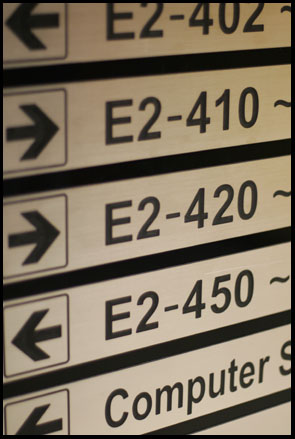Dimensions of a Can of Soup
Back to the Program-A-Day homepage
ProblemYour best friend rummages through your cupboards and emerges with a can of clam chowder. Being slightly obsessive about measuring objects, your friend concludes that the radius of the can is 4 centimeters and the height is 12 centimeters. Your friend then poses some questions to you:
Design a program that finds answers to these questions. Make sure to use constants for values that do not change. Round all answers to the nearest integer value. If you are having trouble, review Named Constants and Arithmetic Operators. You will also need to use the Math.pow method. |
If Statements and Named Constants
| |
|---|---|---|
SolutionDuring the course of the program, the height and radius of the can do not change. This would be a perfect opportunity to use our knowledge of constants and the final keyword: // Useful constants - The point of this program. // If you don't have constants for these then shame on you. final int HEIGHT = 12; final int RADIUS = 4; Notice that we have capitalized the variable names of our constants. This is a standard in most (if not all) of the programming world. We have also initialized the constants in the same line as we declared them. This is because after you declare a variable with the keyword final you cannot modify it. Using these constants we must now calculate the surface area and the volume of the can. Let's start with the surface area: // The surface area is the circumference * the height // and the area of the top and bottom final double SURFACE_AREA = (2*Math.PI*RADIUS*HEIGHT) + (2*Math.PI*Math.pow(RADIUS,2)); As you can see, you can declare a constant that is initialized with mathematical operators and other variables - but only if the other variables are constant themselves! There are four different constants in this line not counting the one we just declared:
If you were to include in the initialization a variable that was not declared of type final, Java would issue a compile error.
// The volume is the area of the circlular portion of the can // multiplied by the height final double VOLUME = (Math.PI*Math.pow(RADIUS,2)) * HEIGHT; The Math.pow(x,y) function is used in both the calculation of the surface area and the volume. This function is used when you want to calculate x to the y'th power. In this case we are calculating the radius squared. It is also important to note that brackets play an important role in order of operations. If you are unsure about using brackets, use them. If you don't use them when you should, you may get weird results. Now that we've calculated our values, we must answer our friend's questions. We make sure to round the values in our output:
// Print out the answers to your friend's questions
System.out.println("1. The surface area of the can is "+Math.round(SURFACE_AREA)+" centimeters squared.");
System.out.println("2. The volume of the can is "+Math.round(VOLUME)+" centimeters cubed.");
System.out.println("3. No you may not eat the clam chowder. Put it back.");
You're probably familiar with the System.out.println function. What may seem confusing is the fact that we are calling the Math.round function in the middle of the line. This is entirely legal. We are rounding our values "on the fly" in a sense. An important lesson to learn in University is not to omit any requirement. The problem states to answer whether or not your friend may eat the clam chowder. You may decide for yourself whether they may or not, but it is important that you do decide. That concludes the program. See below for the entire source code. | ||
Code | ||
